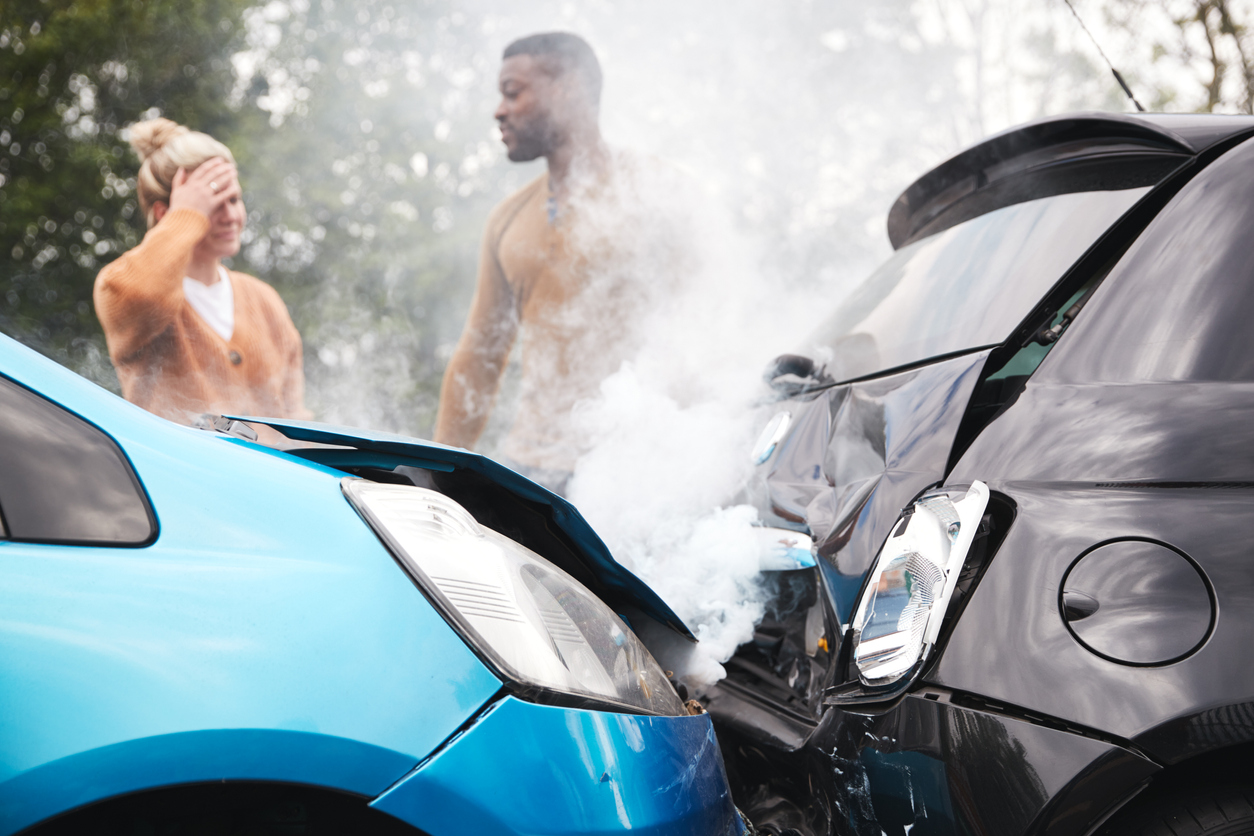Who Is At Fault In A T-Bone Car Accident?

One of the most dangerous types of car accidents is a T-Bone accident. T-Bone crashes happen when a vehicle’s front end collides with the side of another vehicle on the road (forming a “T” shape). A T-Bone accident can cause any number of serious injuries to drivers and passengers. Due to the nature of the crash, some injuries can be permanent or even fatal.
If you were hurt in a T-Bone accident in Denver, Colorado, you could be entitled to financial compensation from the driver who caused the crash. If the other driver is found at fault, their insurance company might also pay for the damages resulting from the accident. An experienced Denver car accident lawyer can evaluate your claim and fight hard to get what you deserve for your injuries.
What Causes a T-Bone Accident?
T-Bone accidents are often caused by inattentive driving or drivers that fail to use caution while on streets and intersections.
Some common causes of T-Bone crashes include:
Drunk Driving
Any level of impairment by alcohol can influence a driver’s judgment, reaction times, and ability to navigate the road safely. In Colorado, over 25,000 drivers are charged with DUI (Driving Under the Influence) each year. This number does not account for the many other drivers who take to the roads after drinking but do not get caught. Drunk drivers are more likely to run red lights, drive through stop signs, and make other mistakes that can cause a T-Bone crash.
Driving Under the Influence of Drugs or Certain Prescriptions
Driving while impaired by drugs, marijuana, or even prescribed medications can lead to accidents. Like with drunk driving, a driver’s judgment and reaction times can be worsened by the effects of narcotics or substances that are legal to use.
Distracted Driving
This involves a driver who is distracted by anything that takes their eyes off the road in front of them. Distracted driving is a rising problem that causes thousands of deaths and many more accidents each year. A common example of distracted driving involves cell phones. In the time it takes to look down at a text message or social media post, a vehicle can travel the length of a football field, creating risk for anybody in harm’s way.
Other distractions can include food, drinks, applying makeup, adjusting hair, looking for items in the car, or talking to passengers. These acts can lead to serious T-Bone crashes even if the at-fault driver thought they were driving safely.
Disobeying Traffic Signals
A driver that fails to yield or stop, or runs through a red light, dramatically increases the chance of a T-Bone accident occurring. Whether intentional or not, the driver can be cited for a ticket and sued in a personal injury case.
Proving Fault In a T-Bone Accident
Proving who’s at fault in a T-Bone accident can be done in different ways. For purposes of an insurance claim, adjusters might look to the police report to determine which driver was responsible. The police report might also include pictures and statements from the drivers and other witnesses. Insurance companies can also interview the drivers involved and policyholders to get a better picture.
In a personal injury lawsuit, an accident victim must prove the other driver was more at fault than they were. Colorado follows a “modified comparative negligence” theory of law in car accident cases. The damage award is based on the at-fault driver’s percentage of responsibility for the accident.
What Evidence Is Used To Prove Negligence in T-Bone Accident Cases?
An experienced car accident lawyer will use all evidence available to prove fault by the other driver, including the following:
- Photographs
- Video footage
- Witness statements
- Physical evidence
- Accident reconstruction
- Expert witnesses.
Your lawyer will use evidence and trial strategy to show that the other driver was liable, which requires proving four elements of negligence:
- Duty. That the other driver had a duty of care to other drivers.
- Breach of duty. That the driver failed to act under their duty of care.
- Causation. That the driver’s actions caused your injuries.
- Damages. That you suffered damages in the form of medical bills, property damages, lost wages, pain and suffering, and other costs.
If you prove that the other driver acted negligently, you may be entitled to recover compensation.
Contact our Denver Car Accident Attorneys at Zaner Law Personal Injury Lawyers at (720) 613 9706
For more information, please contact the Denver car accident lawyers at Zaner Law Personal Injury Lawyers to schedule a free initial consultation with a personal injury lawyer.
We are located in Denver, CO, and proudly serve all of Denver County.
Zaner Law Personal Injury Lawyers
1610 Wynkoop Street, Suite 120.
Denver, CO 80202
(720) 613 9706
Find us with our Geocoordinates: 39.75208145814397, -105.00017355026108
About The Author

Kurt Zaner has earned national recognition for his innovative legal strategies, securing some of the largest verdicts in Colorado. He assists injured clients in Denver with personal injury cases, including car accidents, truck accidents, wrongful death, motorcycle accidents, and more. Click here to view some of the fantastic case results that Zaner Law has successfully handled.
Location: Denver, CO


